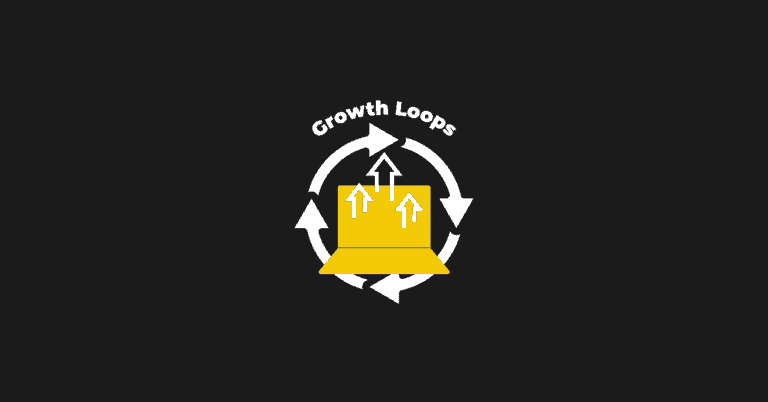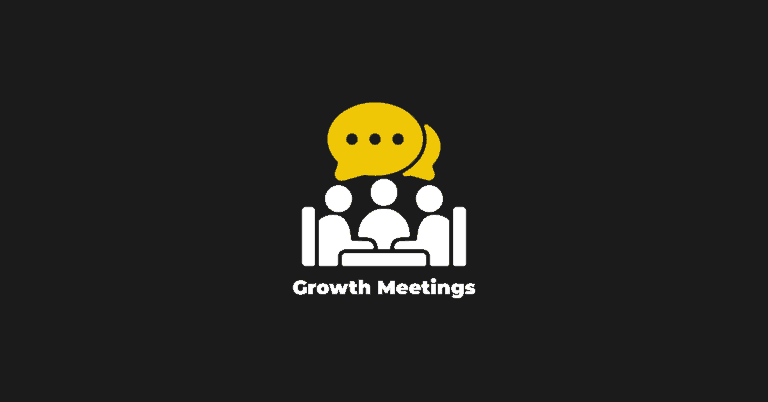Your founder’s intuition isn’t enough to overcome bottlenecks.
You need a structured game plan, team input, and a long-term commitment.
In this article, I will explain a weekly process designed to help your team identify bottlenecks, generate solutions, and prioritize actions to improve your growth process.
This approach isn’t a one-fix wonder. It's an ongoing process that improves your sign-up conversion rate, engagement, and monetization.
If you follow the ProductLed System™️, this process unfolds during your weekly growth meetings.
Let’s start with a recap of the one meeting you need to 2x your growth rate.
Overview of Growth Process Meetings
Growth Process Meetings are weekly 60-minute meetings designed to create a meaningful impact and align your company.
The go-to-market (GTM) leaders from your company should attend. If you have a big team, limit the meetings to seven participants. This helps keep the conversation focused while ensuring you benefit from multiple perspectives.
Here’s the agenda each Growth Process Meeting follows:
- Wins (5 min)
- Strategy Review (2 min)
- Company Scorecard Review (5 min)
- Goal Review (5 min)
- Growth Process (40 min)
- Top 3 Weekly Priorities & To-Do’s (5 min)
- Rating (3 min)
Here’s where you can learn more about structuring your Growth Process Meetings.
By the end, your leadership team should unite to address one main bottleneck in the upcoming week. This collaborative approach ensures that whatever you’re launching has a big impact.
Now, let’s dive into pulling acquisition levers during these weekly meetings.
How to improve your growth acquisition process
The following five stages engage your leadership with continuous assessment and improvement of your acquisition engine. I’ll share examples along the way.
Pinpoint your acquisition problems.
First, set that stage for smart decision-making by reviewing your data.
The metrics on your company scorecard help your team understand where you’re either hitting or missing growth targets.
Monitoring these six GTM metrics each week will shed light on where your biggest bottleneck is.
- Number of visits to your website
- Signups
- Setup
- First Strike
- Key Usage Indicator (KUI) or Product Qualified Leads (PQLs)
- Upgrades
For example, one of our clients found their website had 7,300 monthly visitors, and only four sign ups. This meant that had a problem on the acquisition front.
Prioritize your #1 opportunity.
Your objective is to have your leadership team agree on one top opportunity to focus on in the upcoming week. But how do you pinpoint the most critical challenge in your acquisition engine when it’s not immediately apparent?
The solution lies in combining metric data analysis and realistically looking at your team’s capabilities. One way I do this is by doubling a GTM metric and evaluating how that new number would impact the business.
For example:
| Metric | Metric Month Total | 2x Month Total |
| Number of visits to your website | 7,300 | 14,600 |
| Signups | 4 | 8 |
For this company, it’s more feasible to double the small number of signups than to double website traffic. Focusing on the opportunity to improve signups could easily quadruple the business.
Generate solutions
Next, you’ll generate as many potential solutions as possible for your number one opportunity. You can do this by having your team look into the three solution categories of the PCR test.
- Product Solutions
- Content Solutions
- Resource Solutions
Take three minutes to brainstorm solutions. Set a timer for this, as it really does help get the momentum going. Aim to develop five to 10 potential solutions for each bucket.
Here are a few simple but effective solution examples that might help our client increase signups:
- Simplify the signup using a Google email instead of requiring a Microsoft one.
- Adding “no credit card required” on your free trial landing page.
- Present pricing options on one page.
- Simplifying the layout.
What’s great about generating solutions is your entire GTM leadership team gets to bring their ideas into the mix. It’s not limited to one department.
Prioritize your solutions.
Your team will generate many great solutions, but you’ll need to narrow down the list to one or two realistic options your team can tackle before your next growth meeting.
These three questions can help guide your team’s discussion:
- What solution(s) will have the biggest impact?
- What solution (s) are the easiest to roll out in your business?
- What’s the bandwidth of your team’s ability?
Initially, opt for solutions that offer quick wins. For instance, adding, “no credit card required” copy to the site can easily be added within a week.
It’s good to start small. But as your team gets more experience running through this process, you can choose bigger experiments to roll out over multiple weeks.
Produce solutions
After your leadership has identified one to three priority solutions, you’ll get to work launching them over the next seven days. Then, during next week’s growth meeting, you’ll follow the same process and evaluate the impact of your solutions.
Many of your experiments will fail. Nevertheless, you need to understand why they failed and what your team learned from them.
The only failure when running experiments is failing to learn from it.
Get started rolling our acquisition experiments.
Even before you schedule your first growth meeting, your team needs to know how value is created and captured at your company. By mapping out your value engine, you understand what your company already has in motion that generates measurable value.
Combined with the right data, value engines will help you uncover the bottleneck in your business and set up effective experiments that make an impact.
Weekly growth meetings and value engines fall into the process component of the ProductLed System™️. This comprehensive GTM system includes the nine key components that make up a successful product-led business.
You can implement everything in the process component by reading this article on identifying and pulling your #1 growth lever every 7 days.
Alternatively, if you’d like to work with a coach to implement the process component into your business, check out ProductLed Academy. It’s our intensive coaching program where we’ll help you build a strong foundation for product-led growth so that you can scale faster and with more control.
What’s unique about this program is we’ll work with you and your team to implement the proven ProductLed System™️ so that you can scale faster with less stress.
We’ll review everything we went through today (and a ton more!) with your team to ensure everyone is aligned on your growth process.











